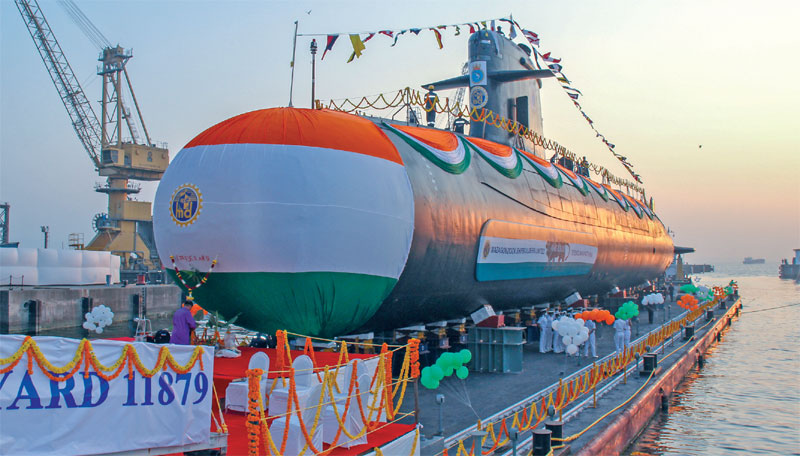Nurturing a true ‘Make in India’ submarine industry amidst trying times

The P75 is the first submarine project significantly contributing to the objective of achieving self-reliance in naval defence by fostering innovation and creating a best-in-class manufacturing infrastructure through a ‘Make in India’ process. P75 was challenging in its own way being a project where the First of Class (FOC) was built completely in India and away from the OEM’s premises. In past the normal practice for submarine building through TOT used to have the FOCs built in the OEM country to speed up on-the-job training and thus significantly shorten the learning curve as well as the delivery time.
Submarine building is mastered by only a handful of highly skilled specialised shipyards around the world. Most submarine projects all over the world have faced difficulties leading to delays of three to 15 years. Infrastructures, equipment and manpower required to build the P75 submarines were all not available at the time of signature of the contracts in 2005. With submarines construction lines being idle since the beginning of the 1990’s, the Indian yard had to re-acquire competences from scratch through a steep learning curve and re-build the infrastructure through huge investments.
Through P75 Kalvari class submarine programme, more than 500 Indian companies were visited and audited to involve at the end a handful of highly skilled qualified suppliers for various deliveries for the submarines. Such skilled companies are more than ready for future indigenous manufacturing and services for future projects (not limited to submarines) if they continue getting similar complex work in adequate quantum to maintain and upgrade their facilities and competencies. Thus, it is important and urgent to preserve and nurture the capabilities of the Indian industrial companies, especially the MSMEs.
Considering these, developing a totally new submarine will take more time, efforts and planning than anyone anticipates. This will not only require inputs from the OEM, but also huge investment by the Indian shipyards and budgetary outgo for the Indian government.
It is also important to consider the socio-economic situation that the world will face owing to the ongoing situation with Covid-19. The nations will necessarily have to cope with the loss of industrial activities and budget deficits. Competitive solutions through capitalizing on existing skills and infrastructure with incremental improvement could be found to narrow the capacity gap of the submarine fleet in a most cost-effective way.
In view of the advanced development stage of DRDO’s AIP, which is scheduled to be integrated during the future refits of the existing P75 submarines, Indian industry could quickly bridge the capacity gap of Indian Navy by cost effectively manufacturing additional Kalvari class submarine with DRDO AIP and some other advanced features, in a time bound manner.
To build upon incrementally what one has already achieved is the most cost-effective way to get additional submarines quickly, only then can we be truly ‘Atmanirbhar’ in the submarine domain.

